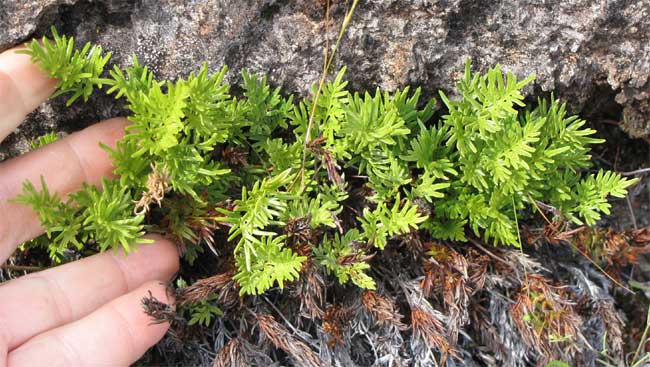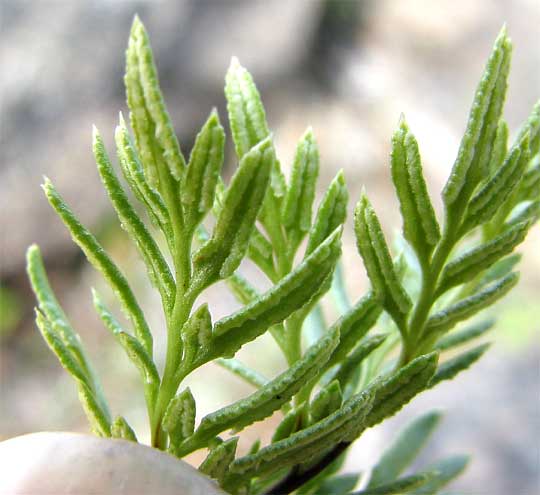Excerpts from Jim Conrad's
Naturalist Newsletter

from the May 10, 2009 Newsletter, issued from the Siskiyou Mountains west of Grants Pass, Oregon:
ROCKBRAKES BELOW THE ROCKS
Out in the serpentine balds wherever rocks break the surface there's a very good chance that at the rock's very base a small, fragile-looking, frilly, green herbage will appear. That's it above.
That's a fern, the American Rockbrake or American Parsley Fern, CRYPTOGRAMMA ACROSTICHOIDES. Among ferns it's a bit unusual because of its small size and the manner in which it produces its spores.
You'll remember recent fern shots showing round, spore-producing sori occupying the undersides of fronds. In the genus Cryptogramma sori occur in a continuous line tucked into a fold created by the frond's margin curving under itself forming a long margin-flap on the frond's undersurface, as shown below:

That picture shows the frond's underside. A cross section of a frond's leaflet, or pinna, would look like a C rotated clockwise 90 degrees and flattened a bit. The silvery, swollen zones along the pinnae's margins are the folded-under leaf margins, with sori hidden inside them. Spores will easily escape through the folds' midrib-facing slits.
This species lives in noncalcareous (not on limestone) cliff crevices, talus slopes and at rock bases. It's distributed fairly widely in mountainous western North America as far east as Michigan and New Mexico, plus in Asia. The word "American" appears in both its common names because the species is practically identical to one in Europe and for a long time ours was regarded as a subspecies of the European one. However, now it's known that our species has 60 chromosomes while the European one has 120. That means that the two populations can't interbreed, so by definition they are separate species no matter how much alike they look.
Rockbrakes produce two kinds of fronds: a narrow-leafleted, spore-producing type like the ones in my picture, and; a broad-leafleted form looking very much like parsley. The fronds in the first picture are all narrow-leafleted, spore-producing fronds. In that picture notice how last year's brown, dried-out fronds hang below the new fronds. I've been watching the new fronds unfurl during the last three weeks or so.